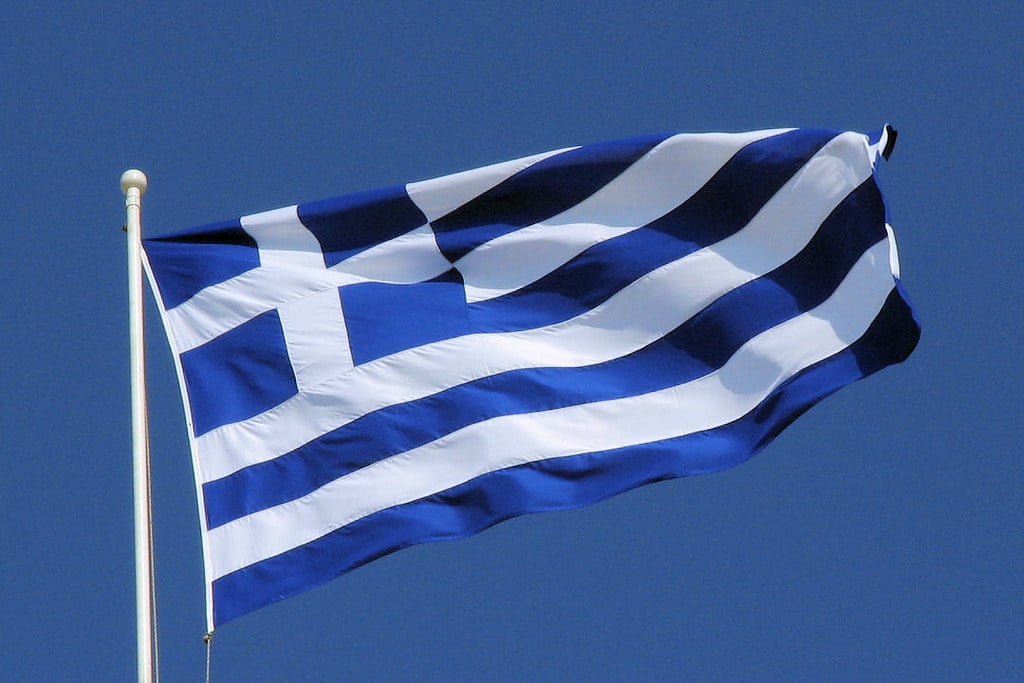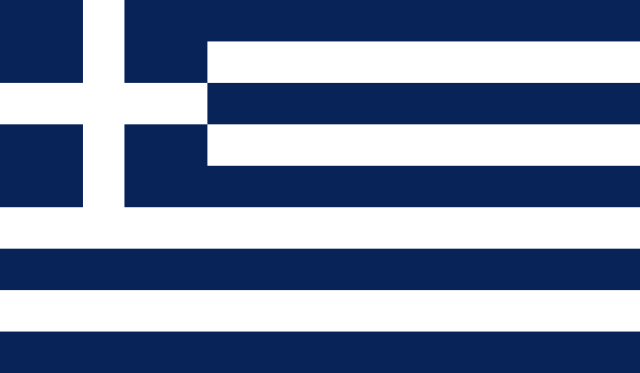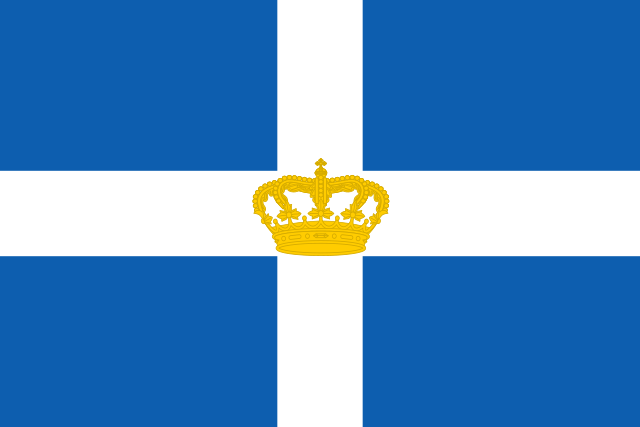
The Greek flag, much like Greece itself, has transformed substantially throughout the country’s long history.
During the long Ottoman occupation, different regions — and even families — in Greece flew their own flags, and once the country declared independence in 1821 and became officially recognized in 1830, the new state needed a shared flag to unite her people.
Although versions of the current flag, called “Η Γαλανόλευκη” or “the blue and white,” have been found in the country since the Revolution in 1821, many other banners and flags have represented the Greek state from its birth to the present day.
The current Greek flag
The country’s current flag is iconic — the contrast between the rich blue and stark white, symbolizing the sky and sea, instantly calls the country it represents to mind and sparks pride in the heart of every Greek.
In the upper left corner, the flag features a white cross against a blue background, representing Greek Orthodoxy, the country’s predominant religion.
The flag’s nine horizontal stripes, five blue and four white are said to represent the nine syllables in the phrase “Ελευθερία ή Θάνατος (Eleftheria i Thanatos),” the revolutionary phrase translating to “Freedom or Death.”
The utterance was proudly proclaimed by the Greeks during the War of Independence, and it embodies their willingness to sacrifice their own lives in the fight for freedom.
However, some say that the nine stripes simply represent the nine letters of Ελευθερία or freedom.
Others have posited that the nine stripes stand for the nine muses, from the country’s ancient history; however, this claim is disputed.

The history of Greece’s current flag
The current flag’s design was first officially designated as Greece’s naval flag in 1830, although it had been unofficially used throughout the country since the start of the Revolution in 1821.
The first iteration of this iconic flag featured a coat of arms and crown from Bavaria, the homeland of Greece’s first king, Otto, in the middle of the cross. Its stripes are also a light blue, almost turquoise color.
The light blue stripes served as another nod to the king’s Bavarian background, as the color was used widely throughout that region.

Although used as the civil flag, raised on land rather than sea, during the country’s military dictatorship from 1967 to 1974, the flag as we know it today became the country’s only official banner on both land and sea in 1978.
After the fall of the junta, the blue on the flag changed from a very deep shade to the lighter hue it is today. Notably, however, there is no official designation regarding the shade of blue that the flag must be.
Greece’s first official flag

The country’s first official flag to fly over Greek land, not sea, was a stark white cross over a deep blue background.
The simple yet powerful image was adopted as Greece’s official flag at the First National Assembly of Epidaurus, where Greek revolutionaries met for the first time in January of 1821.
On that historic occasion, Greek academics, fighters, and politicians gathered formally to declare independence from the Ottomans and write the nation’s first constitution.
While there, the delegates believed that uniting the country under one official flag, doing away with the many familial and regional flags flown throughout the country, would show the world that Greece was committed to independence and ready to become a nation.
They chose the flag design, which represents Orthodox Christianity with the cross, and the nation’s sky and sea with its colors of blue and white, because it embodied the nation’s values and was already popular across Greece.
Traditionally, however, the design featured a blue cross on a plain white field. In fact, this design was more popular than the reverse, which became the nation’s first flag.
The first flag was made by monks from Skiathos
The first version of the flag was crafted and raised by monks in the Evangelistria Monastery on the island of Skiathos in 1807.
The monastery plays a significant role in Greek history, as some of the most important heroes of the Greek Revolution, including Theodoros Kolokotronis and Andreas Miaoulis, spent time at the holy site.
It was there that they saw the flag, and later suggested its beautiful, simple design as the perfect banner to unite the country at the National Assembly.
Changes to the first Greek flag
This flag, in its basic form, remained the nation’s banner for nearly two centuries, until the 1960s, when the design of the current Greek flag was chosen to represent the country.
The only minor changes made to the banner’s design throughout the years consisted of adding symbols of the Greek monarchy to it.
These alterations include the same Bavarian coat of arms and crown originally found on the current flag’s first iteration, and later simply a crown in the center of the cross of the first flag.

These changes correspond to periods of the country’s history when it cycled through its status as a kingdom or a republic. During periods when the monarchy reigned in Greece, symbols of royal power were added to the banner.
These additions were later done away with in periods when Greece rejected the monarchy.
See all the latest news from Greece and the world at Greekreporter.com. Contact our newsroom to report an update or send your story, photos and videos. Follow GR on Google News and subscribe here to our daily email!



